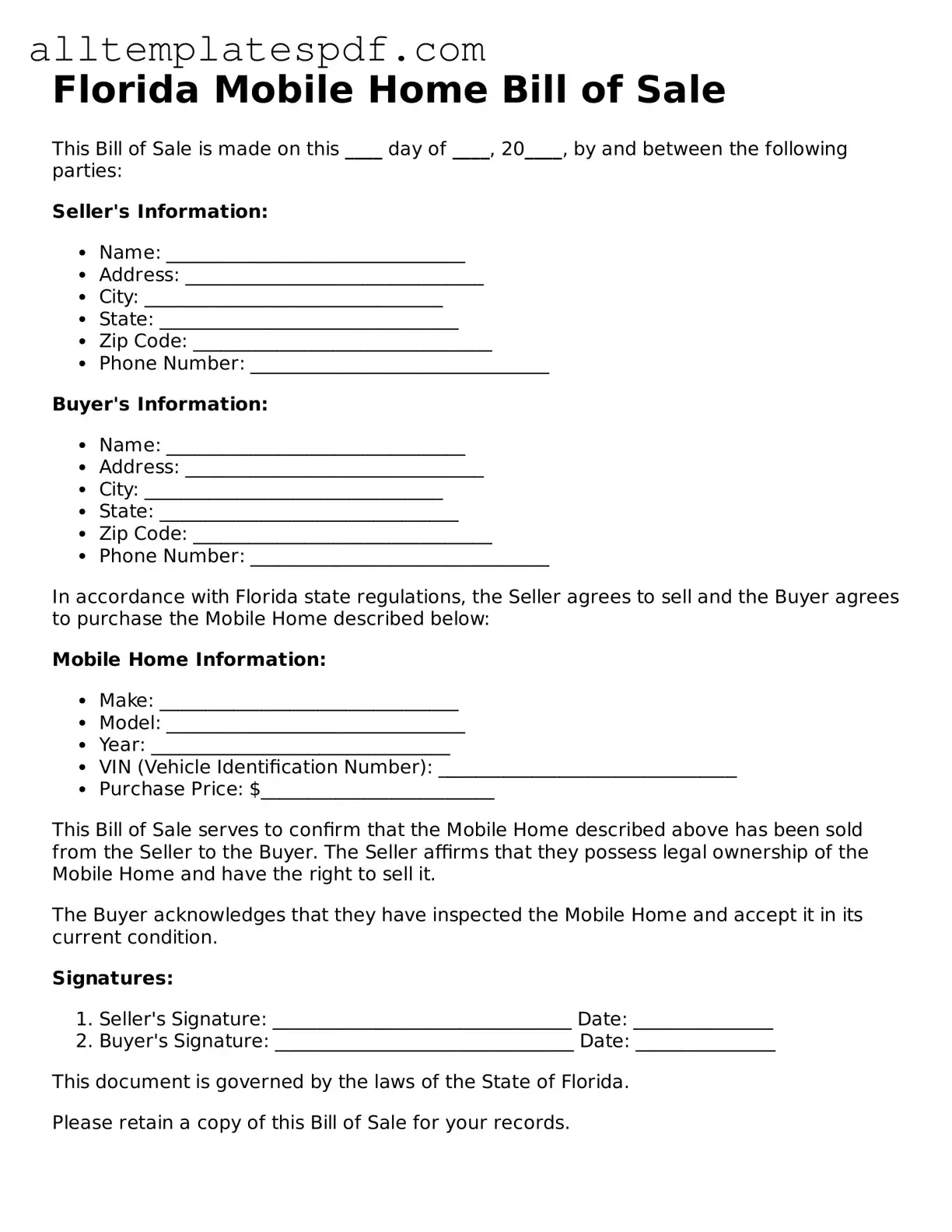Filling out the Florida Mobile Home Bill of Sale form can seem straightforward, but many individuals overlook critical details that can lead to complications down the road. One common mistake is failing to provide accurate information about the mobile home itself. This includes the make, model, year, and Vehicle Identification Number (VIN). Missing or incorrect details can create confusion and may even affect ownership transfer.
Another frequent error is neglecting to include the names and signatures of both the buyer and seller. Without these, the form may not be legally binding. Each party must ensure that their information is clearly printed and that they sign the document in the designated areas. A missing signature can invalidate the entire transaction.
People often forget to specify the sale price of the mobile home. This detail is essential not only for the transaction but also for tax purposes. Leaving this field blank can lead to complications when registering the sale with local authorities. It's important to be transparent and precise about the agreed-upon price.
Additionally, many individuals fail to date the form correctly. The date of the sale is crucial for record-keeping and can impact the transfer of ownership. If the form is dated incorrectly or not at all, it may lead to disputes regarding when the sale took place.
Some sellers mistakenly assume that a Bill of Sale is all that is needed for the transfer of ownership. However, in Florida, additional documentation may be required, such as a title transfer. Not being aware of these requirements can delay the process and create frustration for both parties involved.
Another common oversight is not providing a clear description of any included items. If the sale includes appliances or other personal property within the mobile home, these should be explicitly listed. Failing to do so can lead to misunderstandings about what was included in the sale.
Finally, individuals sometimes overlook the importance of keeping a copy of the completed Bill of Sale for their records. This document serves as proof of the transaction and can be invaluable in case of disputes or future inquiries. Always make sure to retain a copy for personal records after the form has been completed and signed.
